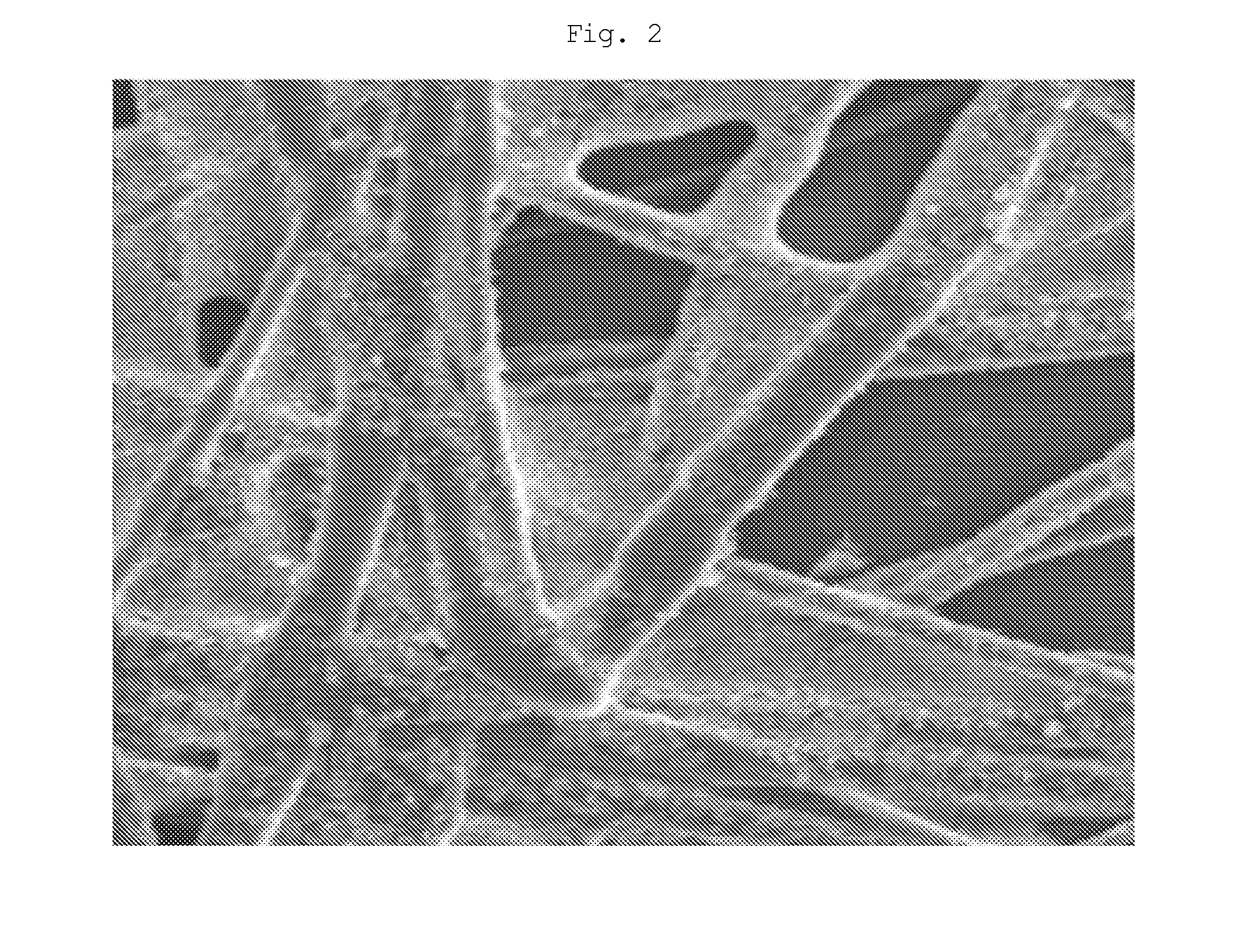Ceramic porous substrate, reinforced composite electrolyte membrane using the same and membrane-electrode assembly having the same
- Summary
- Abstract
- Description
- Claims
- Application Information
AI Technical Summary
Benefits of technology
Problems solved by technology
Method used
Image
Examples
example 1
Step 1
Preparation of Ceramic Porous Substrate Consisting of Silica Nanoparticles and SBR
[0086]Silica (SiO2) nanoparticles, having an average particle size of about 530 nm, and tetraethoxysilane (TEOS) are mixed at a weight ratio of 85:15 and dispersed in an ethyl alcohol solvent by bead milling for 2 hours, thereby preparing a mixture solution.
[0087]Meanwhile, a polyethylene terephthalate (PET) nonwoven fabric having a thickness of 20 μm was selected as a porous polymer base.
[0088]The PET nonwoven fabric was immersed in the above-prepared mixture solution, and then dried at 80° C. for 6 hours, thereby preparing a ceramic porous substrate comprising the silica nanoparticles bound thereto by the inorganic silane-based binder.
Step 2
Preparation of a Sulfonated Polyarylene Ether Sulfone Copolymer Having a Sulfonation Degree of about 50%
[0089]A 100-ml round-bottom flask equipped with a gas inlet, a thermometer, a Dean-Stark trap, a cooler and a stirrer was purged with nitrogen for several...
example 2
Step 1
Preparation of Ceramic Porous Substrate by Sol-Gel Reaction of TEOS
[0092]TEOS and 0.1N nitric acid (HNO3) were mixed at a weight ratio of 60:40 and treated using an ethyl alcohol solvent in the same manner as Example 1, thereby preparing a mixture solution. Meanwhile, a polyethylene terephthalate (PET) nonwoven fabric having a thickness of 20 μm was selected as a porous polymer base.
[0093]Then, the PET nonwoven fabric was immersed in the above-prepared mixture solution for 5 minutes, and then dried at 80° C. and 120° C. for 4 hours for each temperature, thereby performing a sol-gel reaction of TEOS, thereby preparing a porous substrate having a silicate ceramic layer formed thereon. After the ceramic coating process, the thickness of the substrate was maintained at 20 μm, suggesting that the silicate ceramic layer formed from TEOS was formed in the pores of the nonwoven fabric.
example 3
[0094]The process of Example 1 was repeated, except that silica panoparticles were used as the ceramic layer component in step and mixed with a styrene-butadiene rubber (SBR) binder to prepare a mixture solution, thereby manufacturing a reinforced composite electrolyte membrane.
PUM
| Property | Measurement | Unit |
|---|---|---|
| Temperature | aaaaa | aaaaa |
| Fraction | aaaaa | aaaaa |
| Pore size | aaaaa | aaaaa |
Abstract
Description
Claims
Application Information
 Login to View More
Login to View More - Generate Ideas
- Intellectual Property
- Life Sciences
- Materials
- Tech Scout
- Unparalleled Data Quality
- Higher Quality Content
- 60% Fewer Hallucinations
Browse by: Latest US Patents, China's latest patents, Technical Efficacy Thesaurus, Application Domain, Technology Topic, Popular Technical Reports.
© 2025 PatSnap. All rights reserved.Legal|Privacy policy|Modern Slavery Act Transparency Statement|Sitemap|About US| Contact US: help@patsnap.com



